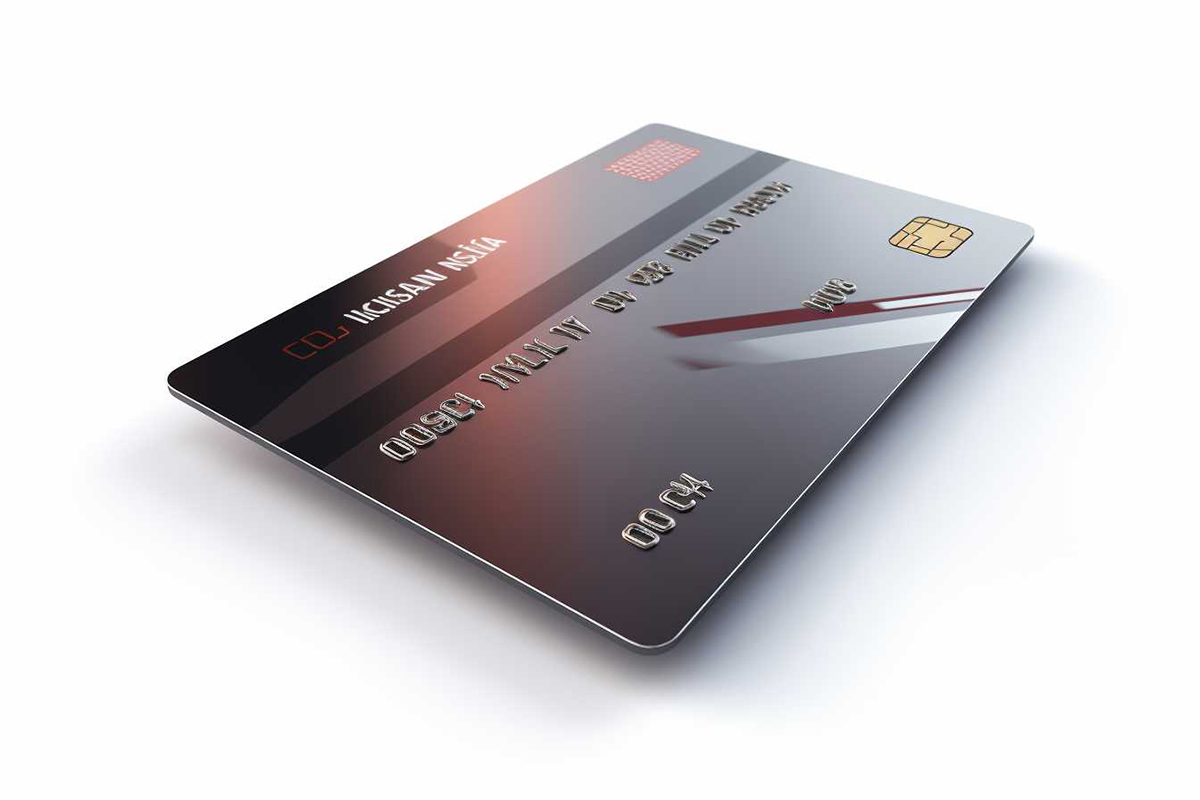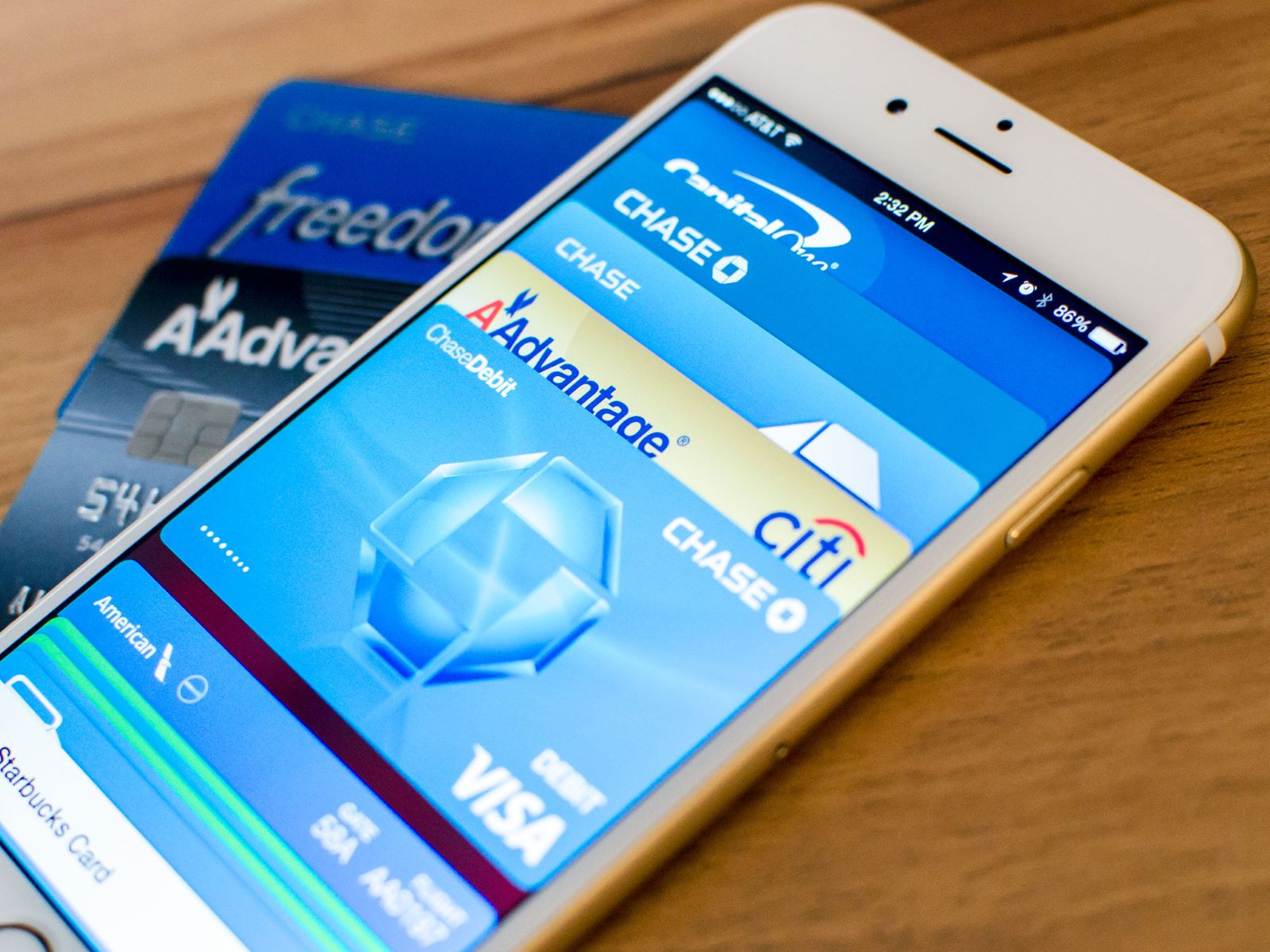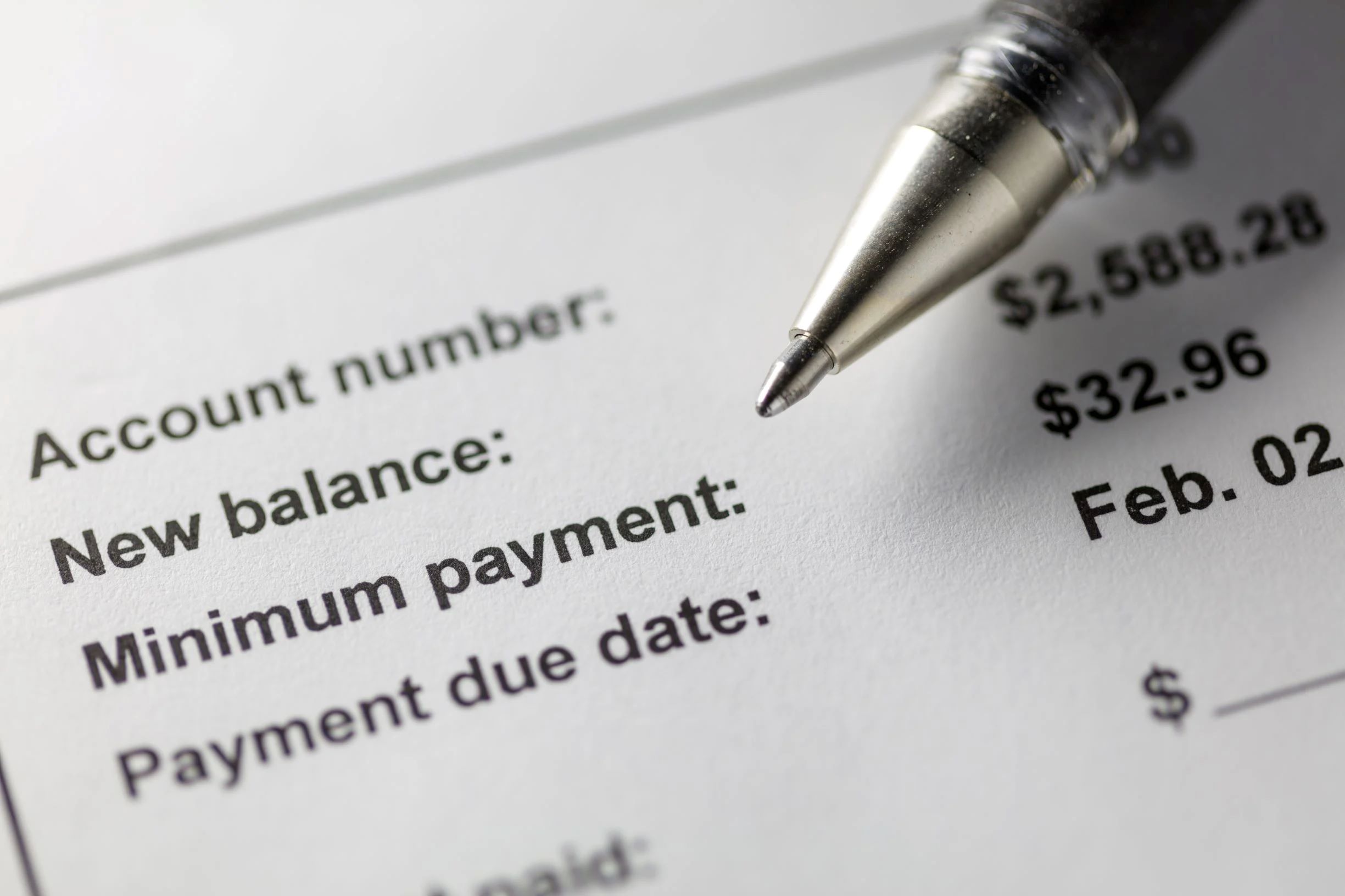

Finance
How To Change Credit Card
Published: November 3, 2023
Learn how to change your credit card and manage your finances effectively with our step-by-step guide. Improve your financial situation today!
(Many of the links in this article redirect to a specific reviewed product. Your purchase of these products through affiliate links helps to generate commission for LiveWell, at no extra cost. Learn more)
Table of Contents
- Introduction
- Step 1: Gather Necessary Information
- Step 2: Contact the Credit Card Company
- Step 3: Verify Identity
- Step 4: Request Credit Card Change
- Step 5: Activate the New Credit Card
- Step 6: Update Account Information
- Step 7: Update Automatic Payments
- Step 8: Destroy or Dispose of the Old Credit Card
- Conclusion
Introduction
Changing your credit card can be a necessary step in managing your financial well-being. Whether you want to switch to a card with better rewards or lower interest rates, or need to replace a lost or stolen card, this article will guide you through the process. By following these steps, you can ensure a smooth transition without any disruptions to your financial activities.
It’s important to note that changing your credit card involves more than just receiving a new physical card. You need to update your account information with the credit card company, update any automatic payments linked to your old card, and properly dispose of the old card to protect your financial security. Taking these steps will help you maintain control over your finances and avoid any potential issues down the line.
So, if you’re ready to embark on the journey of changing your credit card, let’s dive into the step-by-step process that will guide you through this financial transition.
Step 1: Gather Necessary Information
Before initiating the credit card change process, it’s essential to gather all the necessary information related to your current credit card. This includes:
- The name of your credit card company
- Your account number
- The expiration date of your current card
- The CVV (Card Verification Value) number on the back of your card
Having these details on hand will make it easier to communicate with the credit card company and ensure a seamless transition to your new card. It’s a good practice to gather this information before taking any further steps.
In addition to the necessary information about your credit card, it is also a good time to assess your financial needs and evaluate what features you’re looking for in a new credit card. Consider factors such as interest rates, rewards programs, annual fees, and any specific benefits that align with your lifestyle and financial goals.
By understanding what you’re looking for in a new credit card, you can make informed decisions when selecting a replacement card. This step is crucial to ensure that the new card meets your financial needs and offers the features and benefits that are most important to you.
Once you have gathered all the required information about your current credit card and have a clear understanding of what you want in a new card, you are ready to move on to the next step: contacting the credit card company.
Step 2: Contact the Credit Card Company
Now that you have gathered all the necessary information, it’s time to contact your credit card company to inform them of your intent to change your credit card. Most credit card companies offer multiple channels for communication, including phone, online chat, and email. Choose the method that is most convenient for you.
When reaching out to the credit card company, be prepared to provide your account information, such as your account number and personal identification details, to verify your identity. This step ensures that the request is coming from the rightful account holder and helps maintain the security of your financial information.
During your conversation or correspondence with the credit card company, clearly state your intention to change your credit card and request assistance in doing so. They will guide you through the necessary steps specific to their processes and policies.
It’s worth mentioning that you may encounter wait times or automated processes during this step. Patience is key, as ensuring your request is properly processed and documented will help prevent any future issues or misunderstandings.
It’s also a good idea to inquire about any fees associated with changing your credit card. Some credit card companies may charge a fee for this service, so it’s important to be aware of any costs involved.
Remember to take notes during your conversation or save copies of your correspondence for future reference. Having a record of your communication will help you in case any discrepancies or issues arise during the credit card change process.
Once you have successfully contacted the credit card company and informed them of your intent to change your credit card, you can proceed to the next step: verifying your identity.
Step 3: Verify Identity
Verifying your identity is an essential step in the credit card change process. It ensures that the credit card company can authenticate your request and prevent unauthorized individuals from making changes to your account.
The specific method for identity verification may vary depending on the credit card company’s policies. The most common methods include answering security questions, providing personal information, or submitting necessary documentation. The credit card company will guide you through the verification process and inform you of the specific requirements.
Be prepared to provide information such as your full name, address, date of birth, and Social Security number. It’s crucial to double-check that the information you provide matches the details associated with your account to avoid any delays or complications in the verification process.
In some cases, the credit card company may request additional documents as proof of identity, such as a driver’s license or passport. If this is the case, make sure you have these documents readily available to expedite the verification process.
During the verification process, it’s important to remain patient and cooperative. Understand that the credit card company is taking these steps to protect your account and ensure the security of your personal and financial information.
Once your identity is successfully verified, you can proceed to the next step: requesting the credit card change.
Note: It’s a good practice to monitor your credit card statements and financial activity during this process to ensure the security of your account. If you notice any suspicious transactions or activity, notify the credit card company immediately.
Step 4: Request Credit Card Change
After verifying your identity, it’s time to formally request the credit card change from the credit card company. This involves requesting a new credit card to replace your current one. The process may differ slightly depending on the credit card company, but generally, you can follow these steps:
- Confirm with the credit card company that they offer a credit card replacement service.
- Provide the necessary information, such as your current account details, to assist the credit card company in processing your request.
- Specify the type of replacement card you want. For example, if you are switching to a different card within the same company, mention the specific card you want. If you are switching to a new credit card company or product, indicate your preference.
- Check if there are any fees associated with the replacement. Some credit card companies may charge a fee for issuing a new card, while others may waive the fee for certain circumstances, such as a lost or stolen card.
- Request an estimated timeline for receiving the new credit card. This will give you an idea of when you can expect the replacement to arrive.
During this step, it’s essential to keep good communication with the credit card company. Take note of any reference numbers or confirmation codes provided by the credit card company, as these can be helpful in tracking the progress of your request.
Remember, the credit card company may need to review and process your request, which can take some time. Stay patient during this step and follow up with the credit card company if necessary, while keeping in mind their estimated timeline for receiving the new card.
Once your request for a credit card change has been successfully submitted, you can proceed to the next step: activating the new credit card.
Step 5: Activate the New Credit Card
Once you receive your new credit card, you will need to activate it before you can start using it for purchases. This step is essential to ensure the security of your account and prevent unauthorized access to your funds.
The activation process may vary depending on the credit card company, but it typically involves one of the following methods:
- Phone activation: Call the designated activation phone number provided with your new credit card. Follow the prompts and provide the requested information to complete the activation process. This usually includes verifying your identity and providing the new credit card’s unique identification number.
- Online activation: Visit the credit card company’s website and log in to your account. Look for the option to activate a new credit card and follow the on-screen instructions. You may need to enter the new card’s information, such as the card number, expiration date, and CVV, to complete the activation.
- Mobile app activation: If the credit card company has a mobile app, you may be able to activate your new card through the app. Open the app, navigate to the activation section, and follow the provided instructions.
Regardless of the activation method, it’s important to carefully follow the instructions provided by the credit card company. This ensures a successful activation and allows you to begin using your new credit card with confidence.
Once the new credit card is activated, it’s crucial to update your account information with the credit card company. This includes verifying that your contact information, such as your mailing address and email address, are accurate and up to date. Keeping your account information current ensures that you receive important notifications and statements regarding your credit card activity.
With your new credit card activated and your account information updated, you can proceed to the next step: updating your account information with any merchants, services, or financial institutions linked to your old credit card.
Step 6: Update Account Information
Now that you have successfully activated your new credit card, it’s important to update your account information with any merchants, services, or financial institutions that have your old credit card information on file. This step ensures a seamless transition and uninterrupted payment processing.
Here are the key areas to focus on when updating your account information:
- Online Accounts: If you have any online accounts, such as retail websites, subscription services, or utility providers, log in to each account and navigate to the payment settings. Replace the old credit card details with the new card information, including the card number, expiration date, and CVV.
- Recurring Payments: Identify any recurring payments linked to your old credit card, such as monthly subscriptions or automatic bill payments. Contact each service provider and provide them with your new credit card information to update their records.
- Billing Profiles: If you have any billing profiles stored, such as on e-commerce platforms or online payment systems, update the saved payment method to reflect your new credit card details. This ensures a smooth checkout process for future transactions.
- Financial Institutions: If you have any other financial accounts, such as bank accounts or investment accounts, that are linked to your old credit card for transfers or payments, update the payment method information with your new credit card details.
It’s crucial to prioritize updating your account information based on the importance and frequency of transactions. Start with essential services, such as utilities, insurance, and loan payments, to avoid any disruptions or late payment fees.
Take note of any deadlines or cut-off dates provided by the service providers for updating your account information. This ensures that you update the necessary accounts within the specified timeframe and prevent any disruption in service.
Remember to double-check each updated account to ensure accuracy. Verifying that your new credit card information is correctly reflected will prevent any potential issues or declined transactions.
With your account information updated, you can move on to the next step: updating any automatic payments linked to your old credit card.
Step 7: Update Automatic Payments
As you transition to your new credit card, it’s crucial to update any automatic payments or recurring charges that are linked to your old card. This step ensures that your payments continue to be processed seamlessly and helps you avoid any potential late fees or disruptions in service.
Here’s what you need to do to update your automatic payments:
- Review Your Statements: Take a close look at your old credit card statements to identify any recurring payments or automatic charges. This can include subscriptions, memberships, utility bills, insurance premiums, and any other services or subscriptions for which you have authorized automatic payment.
- Contact the Service Providers: Reach out to each service provider individually and provide them with your new credit card information. They may request the updated card number, expiration date, and CVV, so be prepared with this information. Some service providers may offer the option to update your card details online through their website or customer portal.
- Date of Transfer: Confirm with the service providers when the change will take effect. It’s essential to understand if the billing cycle aligns with the update, or if you need to make any interim payments using your old credit card.
- Verify Payments: After updating your automatic payment information, monitor your credit card statements and bank statements to ensure that the new payments are being processed correctly. This step helps you catch any potential issues early on, such as missed or unsuccessful payments.
Additionally, consider setting up alerts or notifications through your credit card company or online banking platform to receive reminders when automatic payments are made from your new credit card. This provides an added layer of awareness and helps ensure that you can monitor your financial transactions effectively.
If you encounter any difficulties during this process, reach out to the customer service departments of the service providers for guidance and support. They can assist you in updating the payment information and address any concerns or questions you might have.
By proactively updating your automatic payments, you can ensure that your financial obligations are met smoothly and avoid any potential disruptions or late payment fees.
Now that you have taken care of your automatic payments, it’s time to address the security aspect by properly destroying or disposing of your old credit card. This is the next step, Step 8, in the credit card change process.
Step 8: Destroy or Dispose of the Old Credit Card
As you complete the process of changing your credit card, it’s important to securely dispose of your old credit card to protect your financial security and prevent any unauthorized use. Here are some guidelines for properly handling your old credit card:
- Invalidating the Card: Begin by making the old credit card invalid. Using a permanent marker, cross out the card number and security code (CVV) on the front and back of the card. This ensures that even if the card is found, the information cannot be easily used or accessed.
- Cut the Card into Pieces: Next, take a pair of scissors or a shredder and cut the credit card into multiple pieces. It’s best to cut across the magnetic strip, chip, and any embossed characters to ensure all sensitive information is destroyed.
- Dispose of the Card: Once you have thoroughly destroyed the old credit card, separate the pieces and dispose of them in different trash bags or bins to make reassembly difficult. Be cautious about disposing of the card in a secure manner to prevent any potential theft or misuse.
Note: Some credit card companies may offer specific instructions on how to dispose of their cards securely. If your credit card provider has provided any specific guidelines, it’s important to follow them accordingly.
Another precautionary measure is to check your credit card statements regularly after switching to a new card. This helps identify any unauthorized or fraudulent charges, ensuring that your financial information remains secure.
Remember, protecting your personal and financial information is crucial in the digital age. Be mindful of where you share your credit card details and employ best practices for online security, such as using secure websites and avoiding sharing sensitive information over public Wi-Fi networks.
By securely disposing of your old credit card, you can have peace of mind knowing that your financial information is protected while enjoying the benefits and features of your new credit card.
Now that you have completed all the necessary steps to change your credit card, you can confidently manage your finances with your new card. Keep track of your spending, review your statements regularly, and take advantage of the benefits and rewards that come with your new credit card.
Changing your credit card can be a smart financial move that enables you to optimize your financial situation and better meet your needs and goals. By following these steps and staying vigilant about your financial security, you can maintain control of your finances and make the most of your new credit card.
Remember, always consult with your credit card company for any specific instructions or additional steps to ensure a smooth transition.
Conclusion
Changing your credit card may seem like a daunting task, but by following the step-by-step process outlined in this article, you can successfully navigate the transition with ease. Here’s a recap of the steps involved:
- Gather necessary information about your current credit card.
- Contact the credit card company to inform them of your intent to change your credit card.
- Verify your identity to ensure the security of your account.
- Request the credit card change and specify your preferences.
- Activate the new credit card and update your account information with the credit card company.
- Update any merchants, services, or financial institutions with your new credit card information.
- Ensure that all automatic payments and recurring charges are updated with your new credit card details.
- Safely dispose of your old credit card to protect your financial security.
By following these steps, you can seamlessly transition to your new credit card without any disruptions to your financial activities. Remember to stay organized, keep track of your communications with the credit card company, and double-check your updated account information and automatic payments to ensure accuracy.
Changing your credit card gives you an opportunity to assess your financial needs and select a card that aligns with your goals. Consider factors such as interest rates, rewards programs, annual fees, and any specific benefits that are important to you. Take advantage of the benefits and features that come with your new credit card to optimize your financial well-being.
As always, maintaining good financial habits is essential. Monitor your credit card statements, review your transactions regularly, and stay vigilant against any potential fraudulent activity. By staying proactive and informed, you can make the most of your new credit card and enjoy a smooth and secure financial experience.
Remember, if you have any specific questions or concerns about changing your credit card, it’s always a good idea to reach out to your credit card company directly for personalized guidance and support.
With the information and guidance provided in this article, you are now equipped to confidently navigate the process of changing your credit card. Take control of your finances, explore the benefits of your new card, and make informed financial decisions that support your financial goals.














